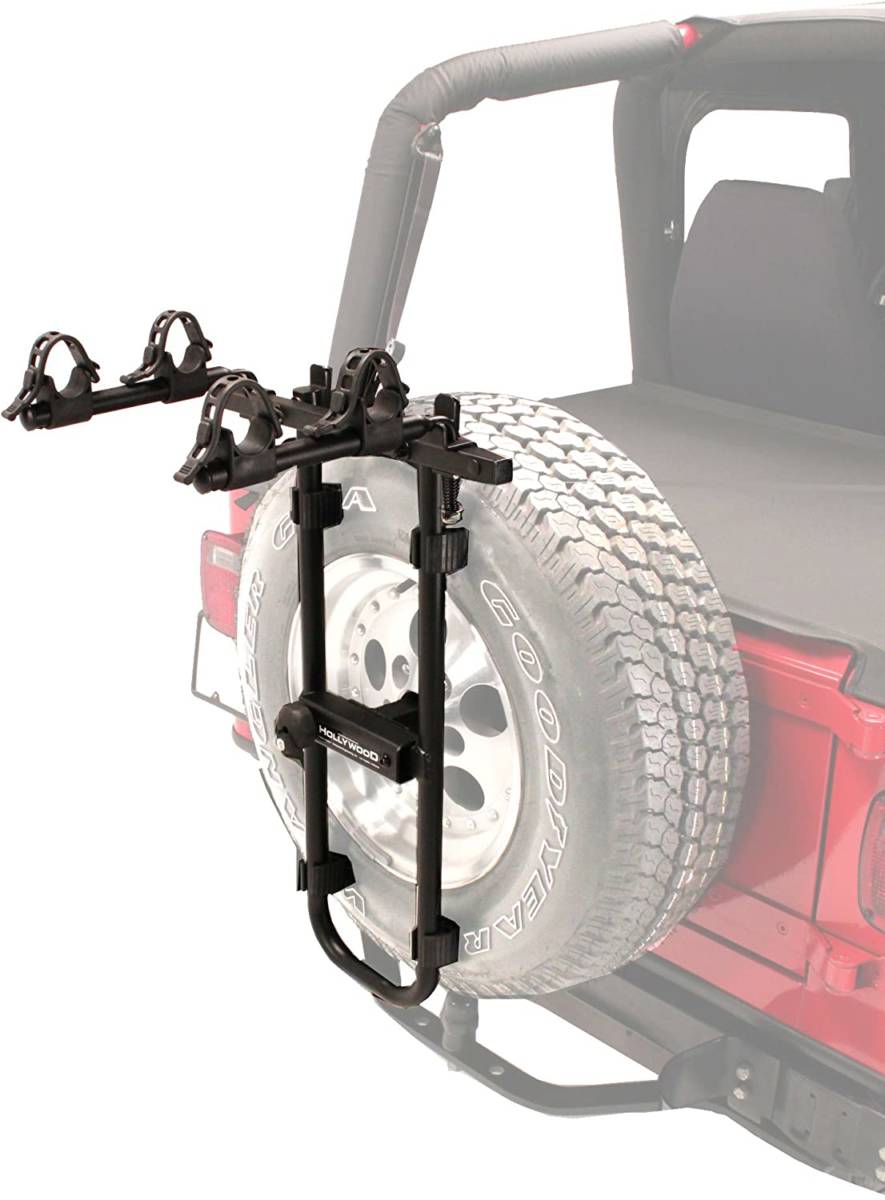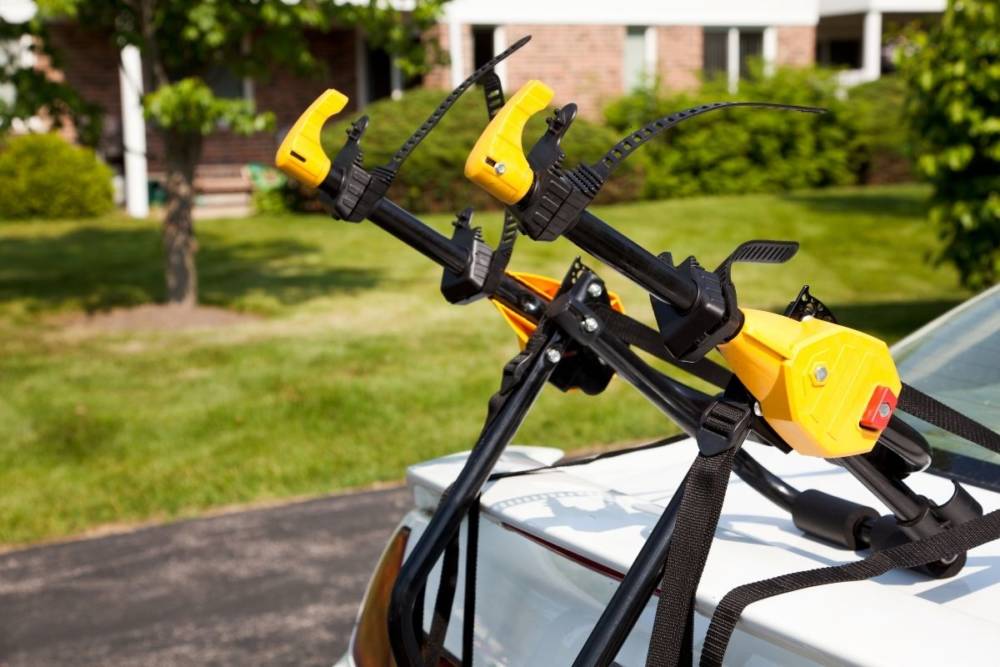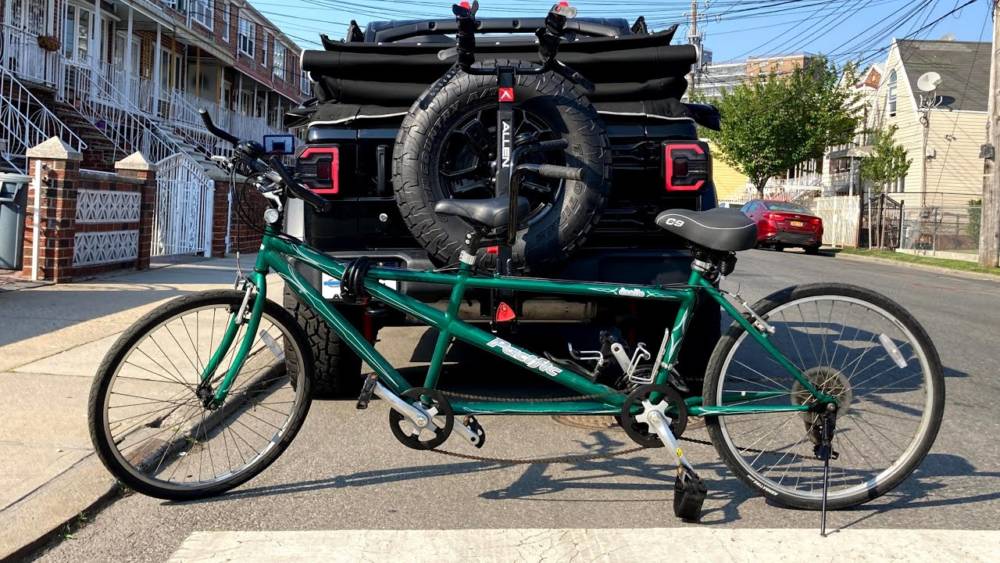Now that you’ve got everything you need for your next journey, you only need to remember to bring your bike. The only problem is that your car does not have a hitch mount, which would make a bike rack the ideal answer for this problem.
This is a circumstance that a good many of us have faced before. To get a hitch mount would entail more effort, and not all of us are interested in spending the additional money either. Having stated that, what additional possibilities are there to consider?
To put it another way, our situation isn’t completely hopeless. There are a variety of options available, which vary according on the space available, the quantity of bikes, and the kinds of vehicles being transported. In addition to this, we have to decide which course of action will be the most effective based on the circumstances.
As a result, this article will demonstrate to you how to transport bicycles without a hitch in a variety of different settings and circumstances. Let’s get begin!
A Number of Alternatives to Using a Hitch When Transporting Bicycles
There are a variety of other bike racks available besides those that attach to the hitch of a vehicle. You name it, they probably make a bike rack for everything: trunk racks, truck bed racks, spare tire racks, roof top racks, etc.
Sure, the bike could be thrown in the back of the vehicle and everything would be OK. However, it is not the most elegant approach, as it takes up space that might be used for anything else. For instance, if you’re going on a vacation that involves camping, you probably don’t want your bike to take up half of the room in your vehicle.
In light of this, the following is a list of several ways to haul your bike that do not involve using a hitch mount.
Using Bike Racks Mounted on the Roof to Transport Bikes
The use of a roof mount is the first option available to you when it comes to carrying a bicycle with your vehicle. The only thing left to do after installing these racks is to position them on the top of your vehicle, as the name indicates.
To be honest, I may have oversimplified things just a little bit. Continue our investigation, shall we?
Installing Racks that are Mounted on the Vehicle’s Roof
Typically, these racks come with some kind of feet that can be attached firmly to the roof in order to keep them in place. The vast majority of them are fastened to the crossbars that are located on the top of your car.
This implies that you must have a firm grasp on the dimensions of the crossbars, including their form and the distance that separates the front and back crossbars. Additionally, there are a variety of ways to tackle mounting in this fashion. Examples include using clamps or attaching plates.
However, a significant number of them make use of vacuum cups. Do not be concerned; they are reasonably safe, and your bicycle will not be moving in any direction.
When you use this strategy, you do not need to be as concerned with the size of the car in order to acquire a rack. They are also simple to put on and take off whenever it is necessary to do so.
Also read: Which is better for your bike: a rack that attaches to your hitch or one that goes on the roof.
Different Types of Bike Mounting for Roof-Mount Racks

These racks are available in a variety of forms, such as those that attach to the fork, the wheel, or the frame. These may have a considerable impact on how you ride your bike, but how they do so will depend on the options you choose.
To install several types of fork mounts, for instance, you will need to take the front wheel off of the bike. Avoiding that step is something that a lot of users would rather do.
Loosening a fork mount with a slotted wheel and axle can cause them to fall off the fork. On the other hand, non-slotted forks need the axle to be removed from the side in order to be used.
This is a great option for those who are afraid to remove their wheels since they don’t want to get their hands dirty. These are also capable of transporting the vast majority of bicycle styles, even those equipped with disc brakes.
There are further mounts known as frame mounts, in which the bike is supported by its frame. These are also very adaptable in many ways.
The Pros and Cons of Having a Roof-Mount Rack on Your Vehicle
The fact that you aren’t restricted in the ways in which you may use this sort of rack is the first advantage of employing it.
These items are fairly adaptable, which means that you may use them to carry a variety of different types of bikes as well as other types of stuff.
If you wish to utilize the trunk, hatchback, or rear door of your vehicle without any impediment, another reason to buy such a setup is if you really want to carry more cargo. The rack and the bike are left on the roof, which not only frees up important floor space but also makes it much simpler to get to everything.
In addition, if you already have crossbars on your vehicle, you won’t need to pay any further money to have a trailer hitch installed.
The problem, however, is in the clearance in the upper levels.
If you are traveling through a location with a low ceiling, there is a good risk that you may scrape that gorgeous bike against anything.
Additionally, many riders dislike having to raise the bike each time, so that is still another factor that should be taken into consideration.
Racks that attach to the trunk are convenient for transporting bicycles.
Racks that are designed to be mounted on the trunk of a car are referred to by that descriptive moniker for a reason. Users who were searching for a versatile and cost-effective solution have found that they have been the best choice.
Racks that are adequate for one’s needs may be readily found even on a limited price while yet retaining all of the characteristics. Let’s have a look at the several ways they may be attached to cars now.
Installing Bike Racks That Mount to the Trunk of the Vehicle
Bike racks that attach to the trunk of your car are among the most user-friendly types of racks available. The majority of these mounts are secured using straps. This indicates that, in contrast to roof-mount racks, they normally do not need any exact dimensions to be taken.
It should go without saying that the user is not required to install them on the trunk. Because of the adaptability of the mounting system, it might be either the hatch or the bumper.
However, there is a qualifier to consider. If the car you drive has a spoiler, then it’s possible that many of these things won’t work with it. There is no need to be concerned; even with spoilers, there are choices that may be made. Before you go ahead and make the purchase, all you have to do is check that this component is in working order.
In general, they may be perfect for both the user who only uses them sometimes and the user who uses them often.
Putting Bike Racks on Trunks of Cars and Trucks
If you want to go with a rack that can be mounted on the trunk of your car, the ideal bike for you would be one that has a big frame and a horizontal crossbar.
During transport, the bicycle must not come into touch with the ground under any circumstances; the crossbar provides sufficient space to prevent this from happening.
However, prior, you may need to do some preparation in order to use unusual frames. For example, bicycles with more compact frames may not be able to find a comfortable fit on these racks.
You might make use of an adapter bar in such circumstances. On the other hand, this would make the process more laborious and call for accurate measurements. After all, this concept that these racks are the ones that are easiest to assemble runs counter to the evidence shown here.
These items often allow you to transport up to three bicycles, which is sufficient for the vast majority of people.
Should Bike Racks That Mount to the Trunk Be Used to Transport Bikes?
The simplicity with which these goods may be used is one of most important advantages of using them. Because of the strap system, they may be attached to your car in a jiffy rather than hours. This also indicates that they are suitable for use with the vast majority of autos, even those that do not have hitches or crossbars.
For more explanation, please see “Hitch vs. Trunk Bike Rack.”
In comparison to the other available choices, trunk-mount racks are often less expensive. And since you don’t need to purchase any extra components to install them, they are appropriate for anybody who is concerned about their financial situation.
Having said that, one must always keep in mind that there are a few problems that might arise. To begin, the majority of the less expensive alternatives do not come with any good safety precautions, which is a major letdown.
Second, depending on the style and function of the rack, there is a possibility that it may leave scratches or other marks on the paintwork of your car. And since the quality of the experience is heavily reliant on the compatibility, there is a minuscule level of danger involved.
Racks for Carrying Spare Tires on Bikes as a Method of Transportation
You shouldn’t have any trouble mounting the bike to the back of your car if it has a spare wheel mounted on the back. It is common for owners of Jeeps and other SUVs to have a spare wheel, and this is an excellent way to put it to use.
Installation of Racks for Spare Tires on the Vehicle
In most cases, a bike rack for a spare tire will attach directly to the spare wheel itself. This necessitates the user removing the tire cover before the tire can be installed correctly. In contrast to the earlier form of racks, these goods need you to take accurate measurements of the items you want to store on them.
For instance, the depth of the tire can prevent your rack from being installed on your car. If your tire is too deep for most bolt-on bike racks to reach, then your rack won’t even be able to fit your bike.
It is also essential to determine the depth of the tread on the tire. It’s very uncommon for bolt-on accessories to not work with tires with a width of greater than 10″-12″.
Straps and bolt systems are often used in these racks’ mounting mechanisms to keep objects firmly in place. Because a good number of them come with choices for offset spare tires, which provide the greatest possible compatibility, we are also good to go in this regard.
Putting Bicycles on Spare Tire Racks
The manner in which these goods transport the bicycles is not all that unlike to the practices that we have seen in the past. In most cases, the rack will have either two or one arm attached to it.
The earlier model features two cradles or arms that are designed to retain the bike’s frame, whereas the later model only has one. Dual-arm racks are not too complicated, and their simplicity makes them a good choice for standard-frame bikes. Additionally, it is feasible to utilize them with unique frames; however, you may want an adaptor for this.
Users of single-arm racks are tasked with using the topplate in order to properly secure the bike frame. One advantage of this is that it is more compatible with a diverse assortment of bicycle frames.
There is also a limit on the quantity of bicycles that may be transported in this manner. The normal capacity of one of these racks is two to three bicycles, and the majority of them provide a reasonable level of protection.
Advantages and Disadvantages of Using Spare Tires on Bike Racks

Spare wheel bike racks are not prohibitively expensive, making them available to cyclists of all financial means. In addition, mounting them is simple, provided that the appropriate dimensions and dimensions are used in the process. This strategy is a straightforward proposal to make in the event that you do not possess a hitch but do have a spare tire.
Additionally, the transportation of many bicycles is doable. Additionally, in contrast to top-mount bike racks, these racks need no lifting of the bicycle since they are attached to the bicycle’s rear wheel.
On the other hand, that benefit may also work against you in certain situations.
For starters, several of them demand that the user remove the bicycle from the carrier if the vehicle in question has a hatchback.
If you have a door that swings out, you can hold them in place.
Even so, it is essential to check that the combined weight of the bicycles does not exceed the threshold’s maximum permissible load bearing capability. Aside from that, these racks are an excellent alternative to consider.
Other Options for the Transportation of Bicycles That Do Not Involve a Hitch
In the event that there are no complications, the aforementioned choices are among the ones that are the most effective. You may, however, try your hand at a couple other approaches that are not included here.
For instance, one has the option of purchasing a bike rack that fits in the bed of a pickup truck. These goods provide safety, and it is simple to transport even five to eight bicycles using them.
They also eliminate any kind of frame touch, which removes one more thing off the user’s mental to-do list. It is also not essential to remove the wheel located at the front of the vehicle.
However, as I said before, the majority of individuals do not possess a pickup vehicle, so these choices are not as general as the ones that were presented earlier. However, if they are compatible with your automobile, you absolutely have the option to purchase them.
Things You Need to Keep in Mind in Order to Transport Bikes without Using a Hitch
- The first thing that you need to figure out is how many bicycles you want to carry. The possibilities are vastly different depending on the value of the integer. In addition to that, make sure you check the weight capacity of the rack before using it just to be cautious.
- In the event that the mount is going to be installed on the roof, check to see that the mounting mechanism is in place. The dimensions of the crossbars are critical.
- In many situations, it is also necessary to remove the front wheel from the bicycle. Keep a watch out for it, since many people would rather not deal with that particular issue.
- People have a tendency to disregard the importance of security. One example is that the safety of many roof racks that attach to the trunk is not nearly as good as it should be. Therefore, giving this facet of it the attention it deserves is of the biggest significance.
- In addition to the dimensions of the automobile, the layout of the bike is an extremely important factor. Consider the possibility that you own a bicycle for your kid that does not have a conventional frame. When this is the case, be sure that you are able to transport the bike without the need for additional equipment.
A Few Parting Thoughts
There are a great number of alternatives that are equally as effective as the hitch-mounted bike racks in terms of carrying capacity and safety. We have the solution to your question: How can you safely carry a number of bikes in a vehicle without them colliding?
Have a wonderful excursion, but first double check that you have all of the necessary needs and measurements in order.






![The [year] Thule Roof Box Buyers Guide best thule roof boxes](https://www.rackstrapgo.com/wp-content/uploads/2022/08/best-thule-roof-boxes-1-150x150.jpg)